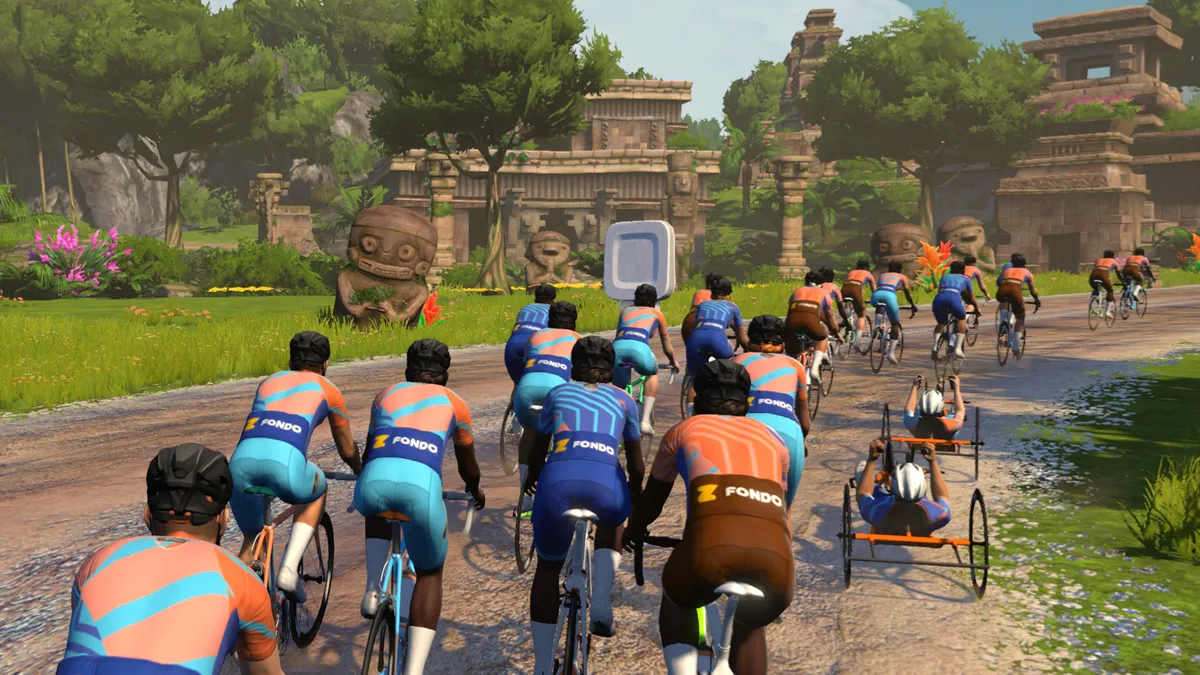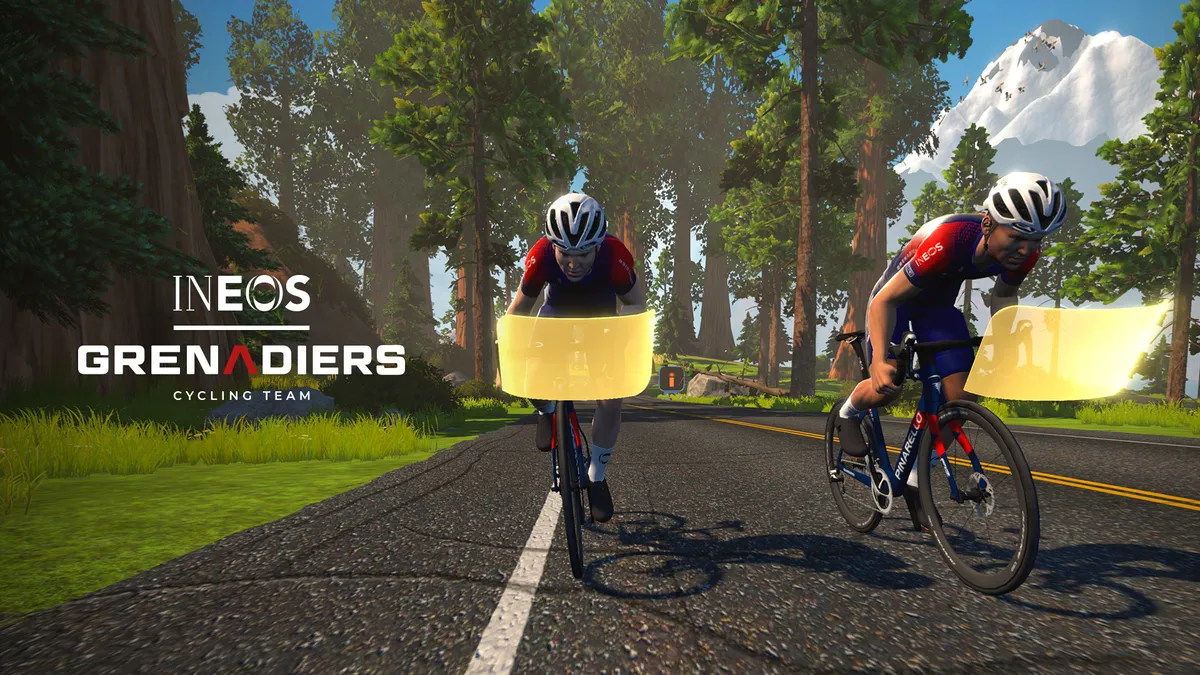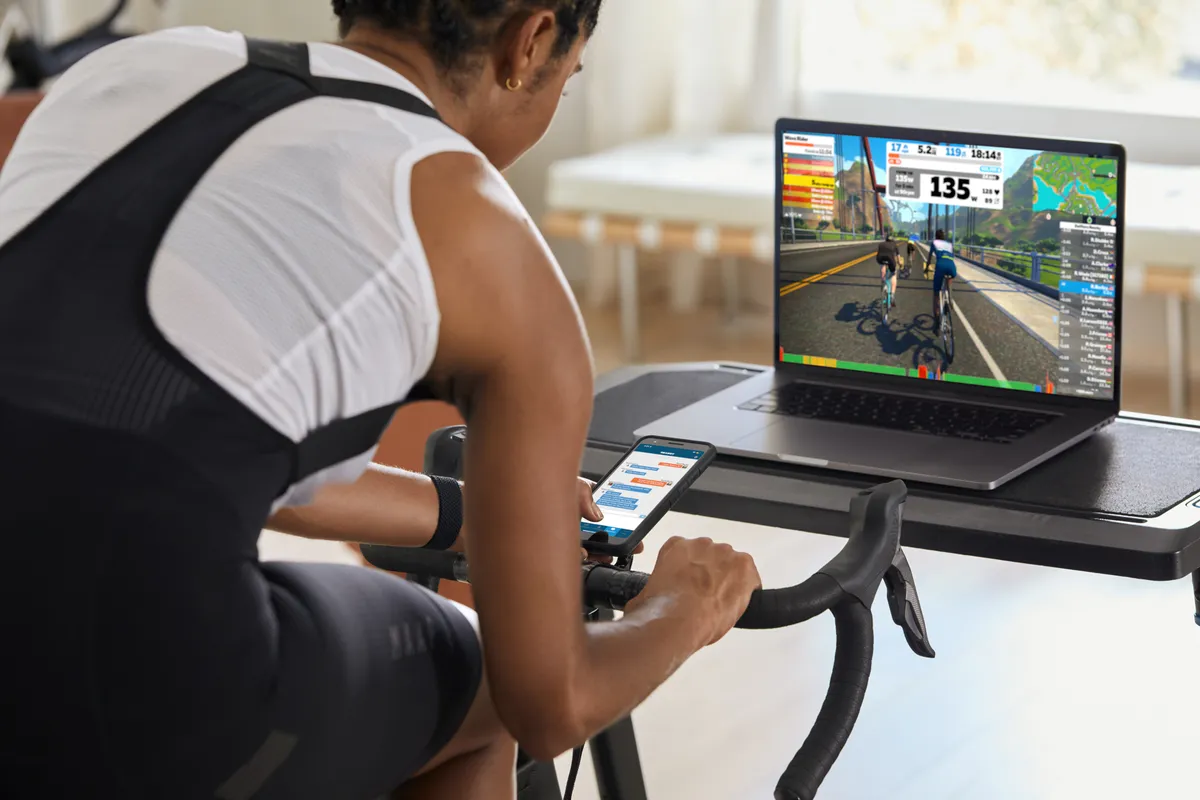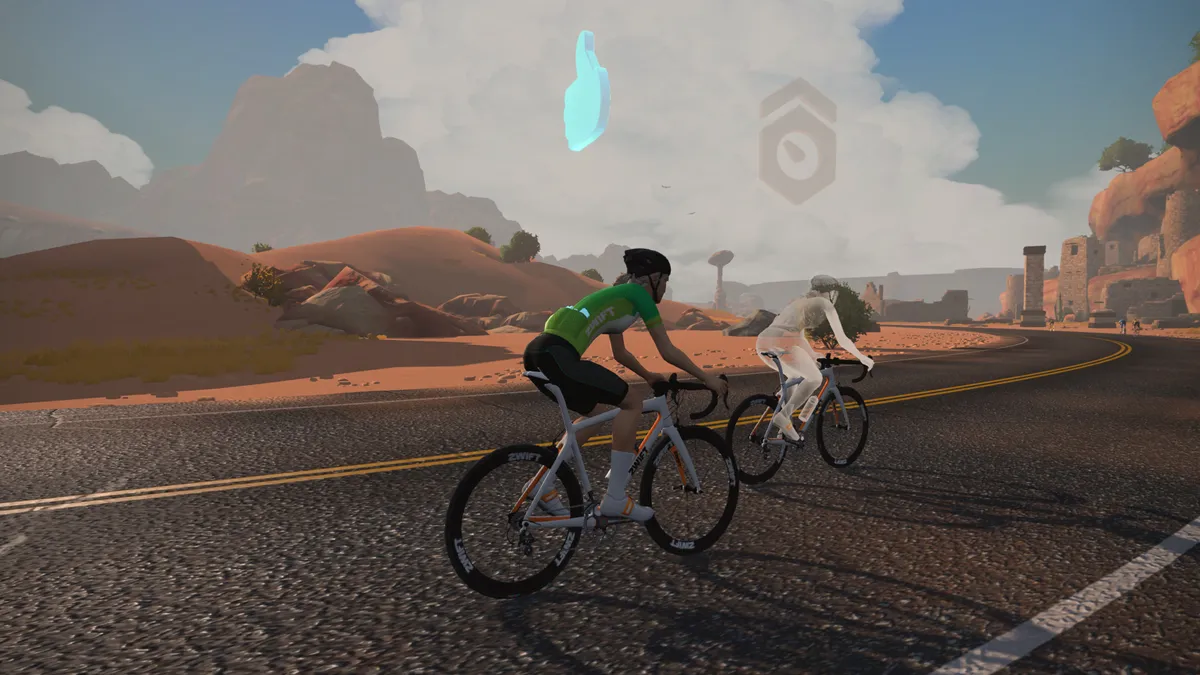Zwift is the ideal year-round tool for taking your training to the next level. Until recently, getting the most out of an indoor cycling setup still required you to source a training plan, whether that was for an individual workout or a structured schedule of sessions to build towards an overall fitness goal.
Zwift has changed all of that. The indoor cycling app has taken the guesswork out of training drills thanks to a wealth of workouts and plans to suit all riders and fitness goals.
The platform has also added entertainment to what was previously, for some riders, a masochistic pastime, meaning you look forward to an indoor workout rather than seeing it as a necessary evil.
Here are six ways to use Zwift to fast-track your training.
1) Set a target

Unless you have access to a cycling coach who pores over your power data, there’s a good chance your training is not entirely focused.
Zwift is able to provide some clarity thanks to its selection of more than 1,000 workouts, which use your FTP and training zones to guide the intensity of each session.
Whether you’re making your first attempt at structured riding or are a seasoned pro, Zwift will ensure you get the most out of your time on a smart trainer.
Ranging from four to 12 weeks in length, each training plan has a specific focus – from getting you primed for the specifics of gravel riding to fine-tuning your fitness for a time trial. Our guide to the best workouts and training plans on Zwift has everything covered.
In addition to its array of plans, the monthly Zwift Fondo group rides are a great way to test your legs and progression indoors before attempting a long-distance ride on the road.
Zwift Fondos are scheduled across the first weekend of every month, starting December 2 2022 and running until April 2 2023.
2) Explore the new Urukazi map

One of Zwift’s biggest draws is the visual stimulation it provides in its nine virtual worlds: Makuri Islands, France, Paris, Watopia, Richmond, London, Innsbruck, New York and Yorkshire.
Rather than half-watching another TV series or settling in for some screen-free music-based motivation, the indoor platform provides an immersive riding experience.
When connected with one of the best smart trainers, your output powers an avatar around one of Zwift’s online worlds, while the trainer’s resistance adapts to simulate virtual gradients.
Each of Zwift’s worlds is available on a rotating schedule (as well as two more – Crit City and Bologna – that are exclusively for events and races), with thousands of kilometres of virtual asphalt, cobblestones and gravel to cover.
New maps and routes are also added frequently. The latest addition, the Makuri Islands’ Urukazi map, features eight new loops for some fresh training motivation, whether you’re exploring at your own pace or using your trainer’s ERG mode for intervals.
3) Get insight from the pros

If you’ve always liked the idea of a warm-weather training camp but have been put off by the logistics (and price), then Zwift has got the workout schedule for you this winter.
You can take part in four different pro-inspired virtual camps, and simulate the training workouts and sessions used by the likes of Ineos Grenadiers, Jumbo-Visma, Movistar and BikeExchange-Jayco.

While the workouts are available on their own on-demand, the main draw is the chance to take them on as part of a group ride.
Scheduled throughout December and early January, the events will enable you to take on a Wout van Aert-inspired VO2 max session or Jess Allen’s domestique-focused workout alongside hundreds of other Zwifters.
Plus, depending on the session you sign up for, you might even be in the presence of a WorldTour pro.
4) Get back on track

If you’re new to cycling, have taken an extended break, or are returning from injury or pregnancy, Zwift’s 12-week ‘Back to fitness’ and ‘Build me up’ plans are the ideal antidote to kick-start your training.
The former is structured around two workouts a week, to ensure a manageable schedule.
The aim is to take your baseline fitness and gradually improve it through a combination of progressively harder workouts and increased training volume. All sessions are less than an hour, but provide a real bang for their buck.
Alternatively, the ‘Build me up’ plan is aimed at slightly more experienced cyclists, with volume averaging five hours per week over four sessions.
It’s ideal for those who are looking to add some structure to their training, with a goal of improving fitness come next year’s targets in spring and beyond.

If these sound like too much of a time commitment, Zwift has also recently added two new four-week training plans: ‘Fast track fitness’ and ‘Build me up lite’.
‘Fast track fitness’ features two workouts per week that are no longer than 30 minutes each, so is a great training plan for newer riders or those embarking on their first structured training plan.
Meanwhile, ‘Build me up lite’ is a handy bridge between those first steps and a heavier training load, with two 30 to 35-minute sessions per week for four weeks.
5) Compete against yourself

Chasing personal bests has always been a feature of Zwift, where a leaderboard showing your 90-day best pops up when tackling in-game segments, but the introduction of HoloReplay as part of this winter’s updates has taken that to the next level.
Essentially a ghost version of you, that can be used to race or pace yourself against during a free ride, the HoloReplay can be set to show your 90-day personal best, most recent effort or both at the same time.
As well as providing a clear comparison of your fitness levels, when set to ‘most recent’, it can also be used for negative split training on one of Watopia’s virtual hills, or as an added incentive during sprint interval training.
6) Go racing – and have some fun along the way

While structured workouts and training plans are a surefire way to fast-track your fitness, mixing things up and adding some spontaneity into the equation is key.
If you’re looking for a hard, all-out session with a competitive edge, little compares to Zwift racing.
Virtual races often start at a flat-out pace, putting you in the red, and can be a case of holding on for dear life until things settle down.
But the high-intensity nature of Zwift racing can be a great alternative to an interval workout. Plus, competing against others doesn’t feel like training and will break you free of a more formulaic workout session.
Alternatively, Zwift provides numerous opportunities to ride with others – whether as part of a club or an organised event – and its chat tool mimics the social aspect of a real-life group ride.
You can also use the new Pacer Groups feature to find a virtual group ride at any time of the day, at a pace that suits you.

